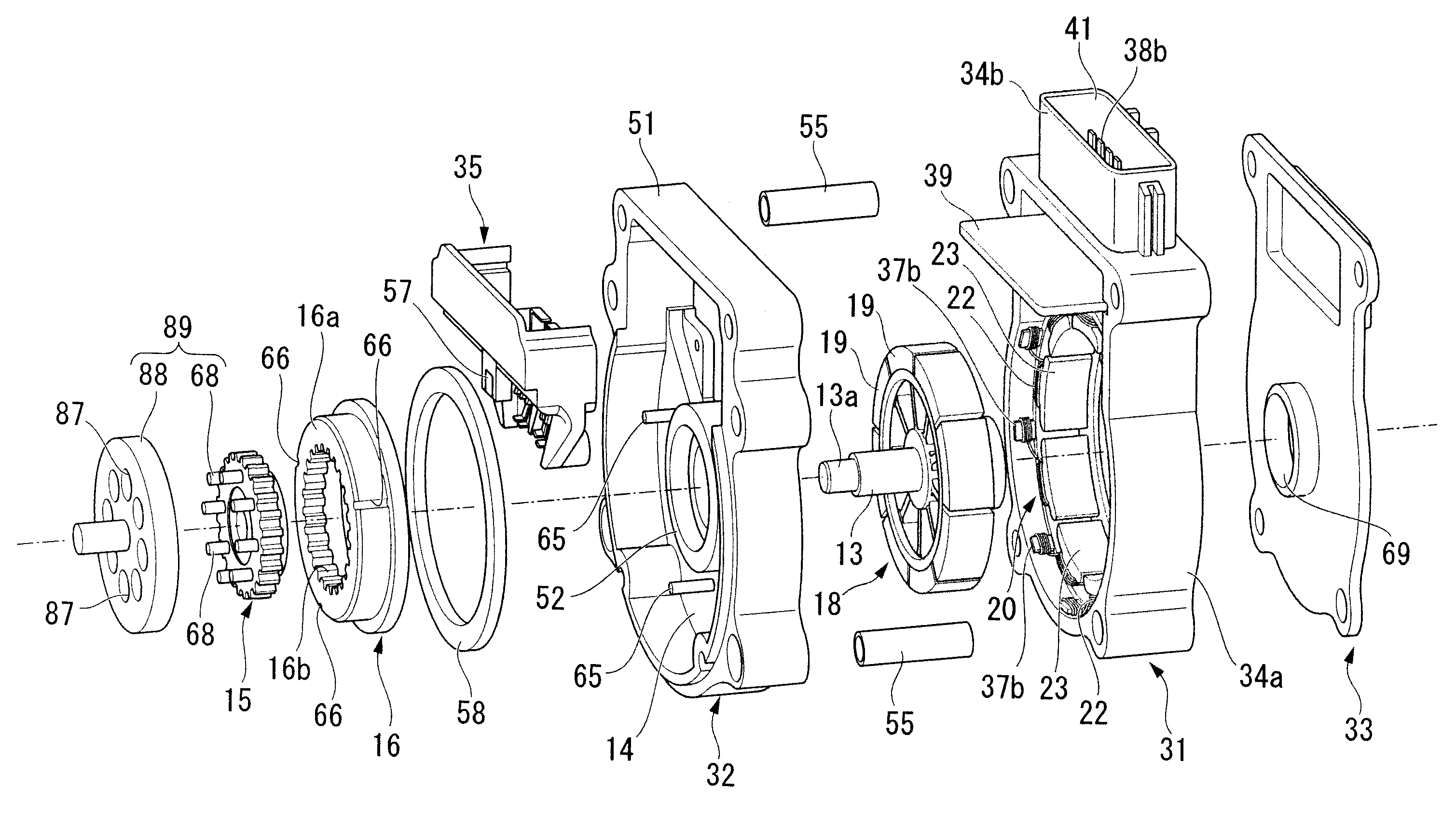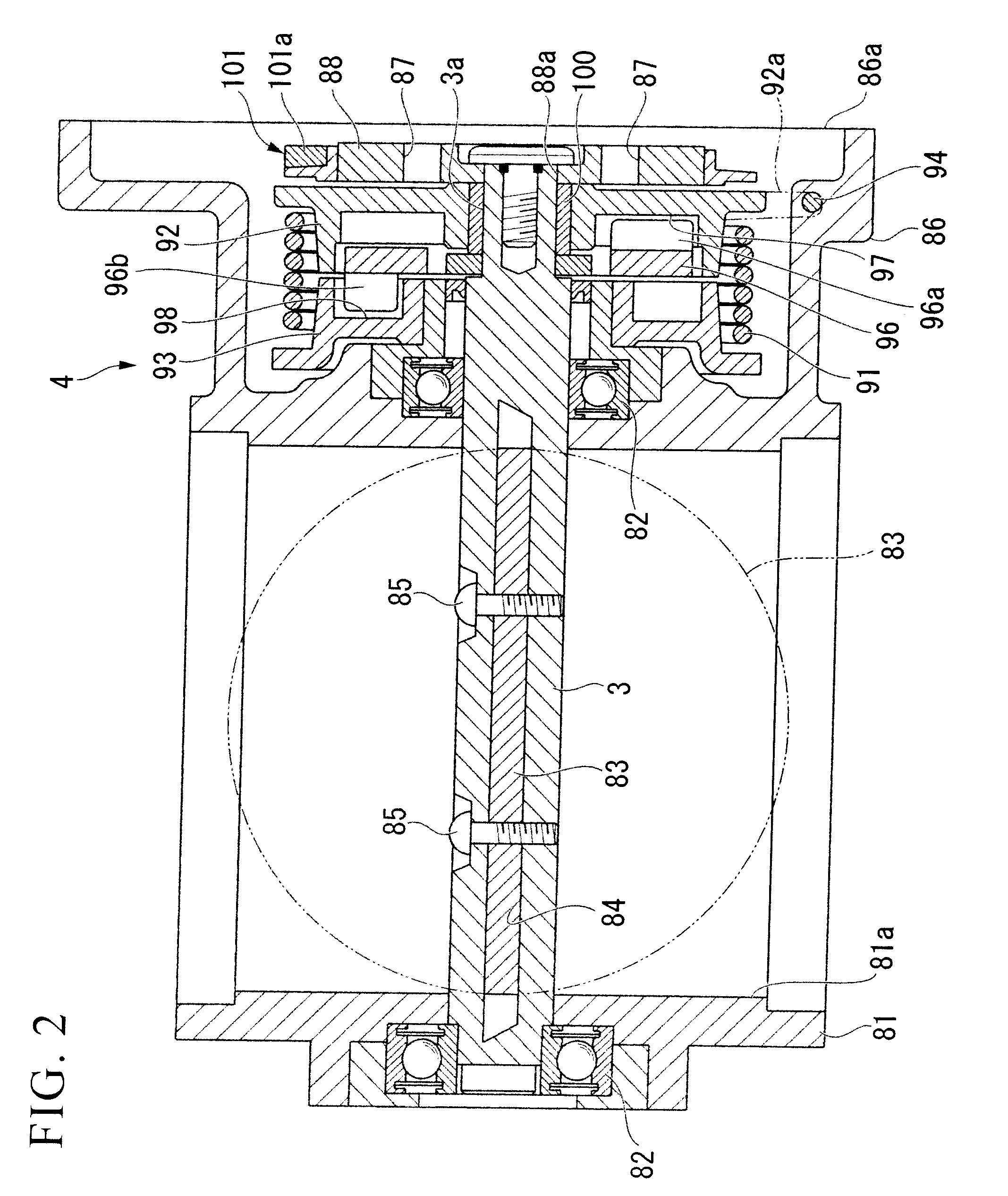Electric motor, rotary actuator and rotary apparatus
a technology of rotary actuators and motors, applied in the direction of mechanical energy handling, dynamo-electric machines, structural associations, etc., can solve the problems of large number of components, deterioration of performance and efficiency of electric motors, and tendency for vibration to occur, so as to simplify assembly tasks required to manufacture rotary actuators, the task of positioning the plurality of sensors inside the housing is simplified, and the effect of improving the manufacturing efficiency of rotary actuators
- Summary
- Abstract
- Description
- Claims
- Application Information
AI Technical Summary
Benefits of technology
Problems solved by technology
Method used
Image
Examples
first embodiment
[0071]the present invention will be described below with reference to the drawings.
[0072]FIG. 1 through FIG. 10 show a first embodiment of the present invention. As is shown in the overall views in FIG. 9 and FIG. 10, a rotary apparatus 1 of the present embodiment is a throttle valve apparatus that is used to adjust an engine intake amount. This rotary apparatus 1 includes a rotary actuator 2 and an output mechanism 4 which has an output shaft 3 (see FIG. 2 and the like) that forms the valve shaft of the throttle valve.
[0073]In this rotary actuator 2, as is shown in FIG. 1 and FIG. 3, an electric motor 12 is housed inside a housing 11. One end portion of a rotor shaft 13 of this electric motor 12 penetrates a wall (i.e., a flat plate portion 14 which is described below) of the housing 11, and protrudes from an outer surface of the housing 11. A reduction gear 17 that includes an external gear 15 and an internal gear 16 is provided on a protruding end portion 13a of ...
second embodiment
[0115]the present invention will now be described below with reference to the drawings.
[0116]FIG. 13 through FIG. 22 show the second embodiment of the present invention. As is shown in FIG. 21 and FIG. 22, a rotary actuator 202 of the present embodiment includes an output mechanism 204 which has an output shaft 203 (see FIG. 14 and the like) that forms the valve shaft of the throttle valve and a throttle valve device (rotary apparatus) 201 that is used to adjust an engine intake amount.
[0117]In this rotary actuator 202, as is shown in FIG. 13 and FIG. 15, an electric motor 212 is housed inside a housing 211. One end portion of a rotor shaft 213 (i.e., a shaft portion of a rotor 218 which is described below) of this electric motor 212 penetrates a wall (i.e., a flat plate portion 214 which is described below) of the housing 211, and protrudes from an outer surface of the housing 211. A reduction gear 217 that includes an external gear 215 and an internal gear 216 is ...
PUM
 Login to View More
Login to View More Abstract
Description
Claims
Application Information
 Login to View More
Login to View More - R&D
- Intellectual Property
- Life Sciences
- Materials
- Tech Scout
- Unparalleled Data Quality
- Higher Quality Content
- 60% Fewer Hallucinations
Browse by: Latest US Patents, China's latest patents, Technical Efficacy Thesaurus, Application Domain, Technology Topic, Popular Technical Reports.
© 2025 PatSnap. All rights reserved.Legal|Privacy policy|Modern Slavery Act Transparency Statement|Sitemap|About US| Contact US: help@patsnap.com



